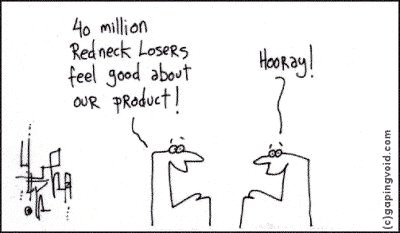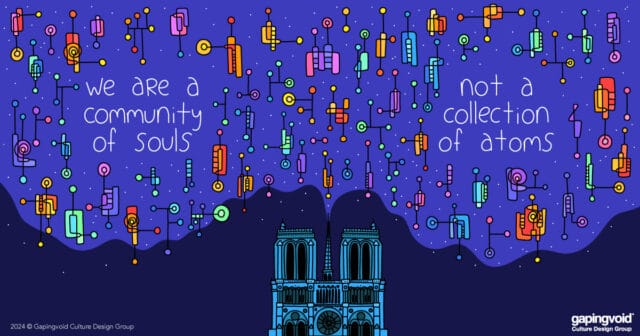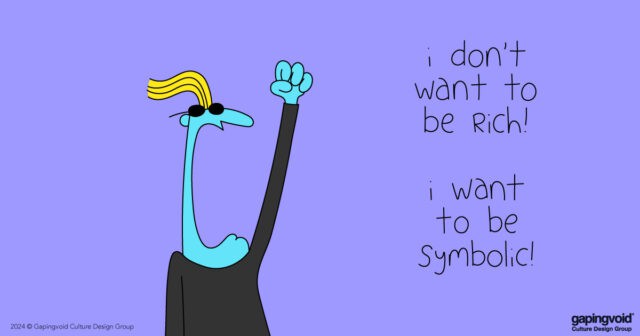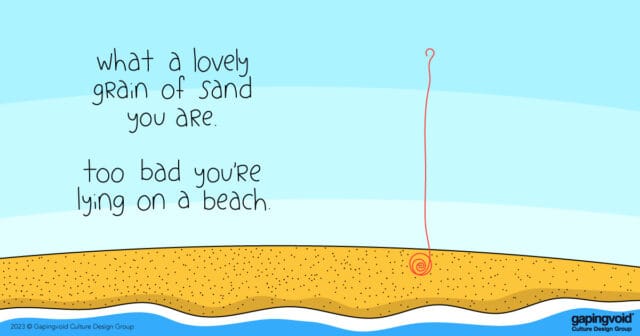
Anyone who has heard me speak publicly lately will know that I’m currently very focused on the “Social Object” idea, which I was turned onto by Jaiku’s Jyri Engestrom. Here’s some more thoughts on the subject, in no particular order.
1. The term, “Social Object” can be a bit heady for some people. So often I’ll use the term, “Sharing Device” instead.
2. Social Networks are built around Social Objects, not vice versa. The latter act as “nodes”. The nodes appear before the network does.
3. Granted, the network is more powerful than the node. But the network needs the node, like flowers need sunlight.
4. My overall marketing thesis invariably asks the question, “If your product is not a Social Object, why are you in business?”
5. Yesterday at the Darden talk I explained why geeks have become so important to marketing. My definition of a geek is, “Somebody who socializes via objects.” When you think about it, we’re all geeks. Because we’re all enthusiastic about something outside ourselves. For me, it’s marketing and cartooning. for others, it could be cellphones or Scotch Whisky or Apple computers or NASCAR or the Boston Red Sox or Bhuddism. All these act as Social Objects within a social network of people who care passionately about the stuff. Whatever industry you are in, there’s somebody who is geeked out about your product category. They are using your product [or a competitor’s product] as a Social Object. If you don’t understand how the geeks are socializing- connecting to other people- via your product, then you don’t actually have a marketing plan. Heck, you probably don’t have a viable business plan.
6. The Apple iPhone is the best example of Social Object I can think of. At least, it is when I’m trying to explain it to somebody unfamiliar with the concept.
7. The Social Object idea is not rocket science.
8. How do you turn a product into a Social Object? Answer: Social Gestures. And lots of them.
9. Products, and the ideas that spawn them, go viral when people can share them like gifts. Example: gmail invites in the early days.
10. Social Object can be abstract, digital, molecular etc.
11. The interesting thing about the Social Object is the not the object itself, but the conversations that happen around them. The Blue Monster is a good example of this. It’s not the cartoon that’s interesting, it’s the conversatuons that happen around it that’s interesting.
12. Ditto with a bottle of wine.
13. Once I get talking about marketing, it’s hard for me to go more than 3 minutes without saying the words, “Social Object”.
14. The most important word on the internet is not “Search”. The most important word on the internet is “Share”. Sharing is the driver. Sharing is the DNA. We use Social Objects to share ourselves with other people. We’re primates. we like to groom each other. It’s in our nature.
15. I believe Social Objects are the future of marketing.
[Written in the departure lounge of Dulles International Airport]
 The Gapingvoid Email - free insights & inspiration three times a week!
The Gapingvoid Email - free insights & inspiration three times a week!
wpDiscuz


